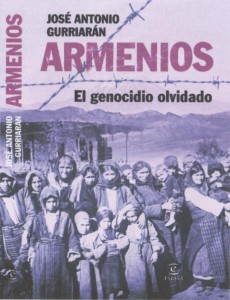Turkey has apparently banned an 11-year-old organization that has been promoting Turkish-Armenian reconciliation through business.
The Turkish-Armenian Business Development Council (TABDC), according to its website, “is the first and only official link between the public and private sectors in each of the two countries’ communities.”
A TABDC press release, received in e-mail, states:
TURKISH-ARMENIAN BUSINESS DEVELOPMENT COUNCIL – EUROPEAN UNION
Brussels, Belgium
May 9, 2008
TABDC-EU calls for Turkish government to reconsider ban On February 26, 2008, the Turkish-Armenian Business Development Council – EU was ordered by the Turkish Ministry of Interior to cease its activities in Turkey.
The TABDC is a unique organization seeking to establish links between Turkey and Armenia. As one of the rare links between the two countries and one working for the common good, TABDC-EU asks the Turkish government to reconsider its unfortunate decision.
Some media organizations have begun to cover this story and expressed an interest which the TABDC welcomes. In apparent contradiction to the recent diplomatic overture by Foreign Minister Babacan to his Armenian colleague, the banning of TABDC-EU is sending mixed signals regarding the Turkish government’s intentions. This is particularly unfortunate at this stage of Turkey’s accession process and on the eve of another European Parliament report on Turkey’s accession.
“The rejection letter by the Ministry of the Interior in Ankara is all the more surprising as this same [AKP] government had sought help from the TABDC a few years ago to establish contact with Armenians in Armenia and the Diaspora”, said TABDC Co-President Kaan Soyak.
The ability of civil society organizations such as TABDC to build contacts and confidence over time and to promote a common understanding in Armenia, in Turkey and in the EU is beyond question. Particularly in such tense relationships as that between the Turkish and Armenian governments, civil society initiatives are indispensible and must be allowed to operate freely.
Kaan Soyak wishes to correct some press misstatements however. TABDC, since its foundation, has never lobbied one way or the other on the genocide issue. Although the organization recognizes the significance of the issue, it has not included it within its remit. This decision came after careful consideration, and we continue to believe that that it is the most appropriate. We call upon all involved to respect this decision.
While TABDC-EU asks the Turkish Government to re-consider its decision, it will continue to act at its level to promote understanding between the two societies and to help reestablish relations between the two countries.
As the press release alludes, the ban might have to do with the group’s de facto recognition of the Armenian genocide, a crime official Turkish and many nationalists vehemently deny. Soyak himself, for instance, refers to the Armenian genocide as such. TABDC, nonetheless, repeatedly makes clear that their work does not deal with the issue of the genocide.





